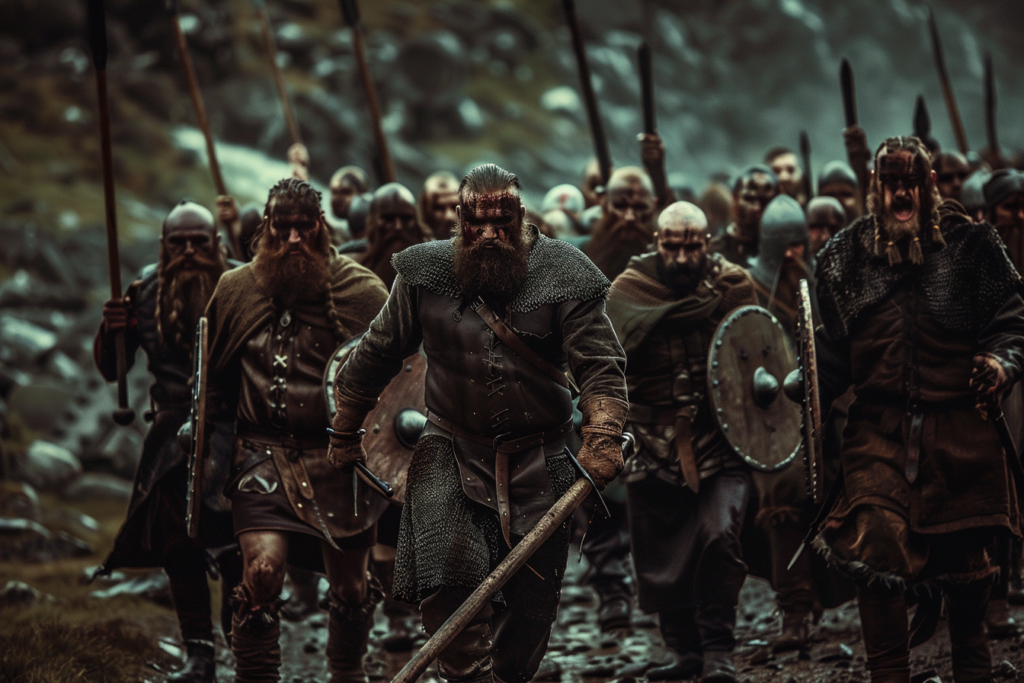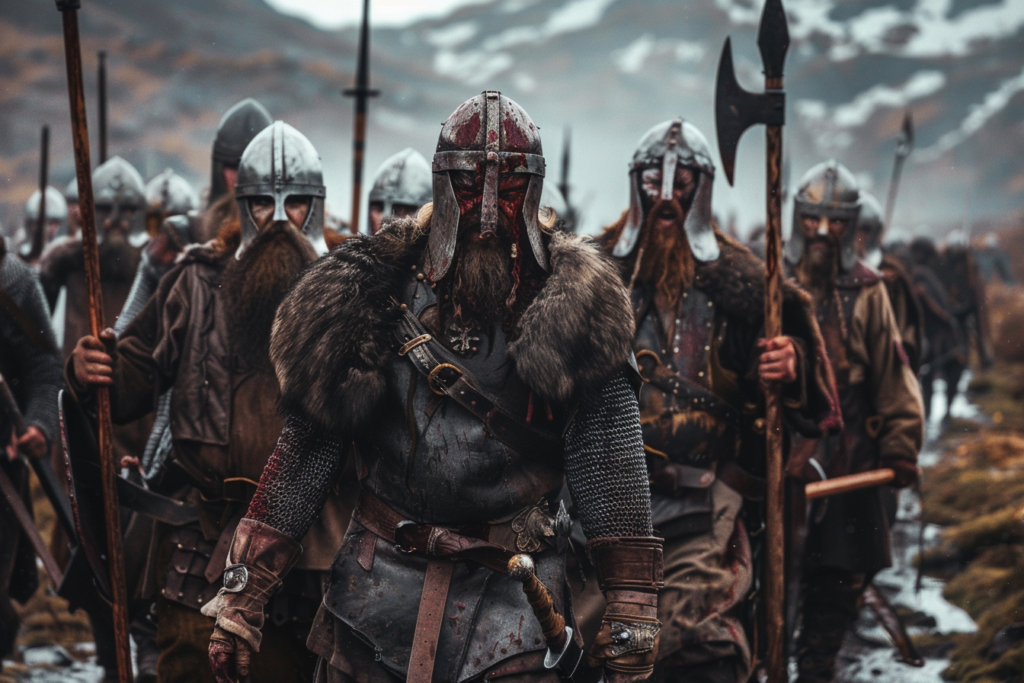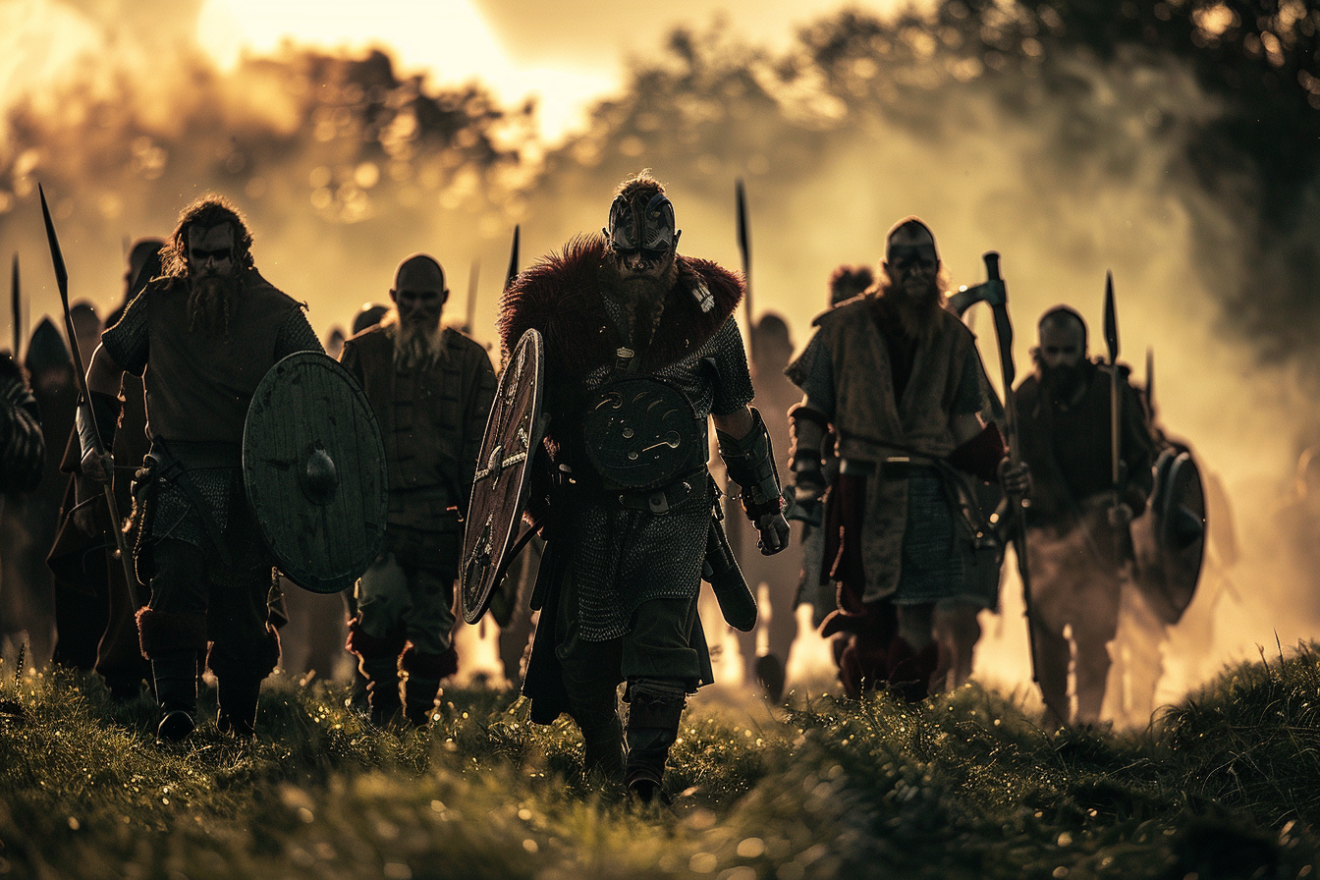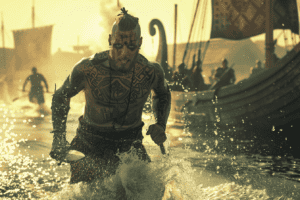The Vikings were known for their brutal tactics in warfare, including their use of decapitation as a psychological weapon. Decapitation was a common practice among the Vikings, and it was used to intimidate and control their enemies.

Decapitation was a form of psychological warfare that the Vikings used to strike fear into the hearts of their enemies. The sight of a decapitated head on a pike was a gruesome reminder of the Vikings’ power and brutality.
This tactic was used to intimidate and control their enemies, as well as to demoralize them before battle.
The Vikings’ use of decapitation was not limited to the battlefield. It was also used as a means of punishment for those who broke Viking law.
The decapitated heads of criminals were often displayed in public as a warning to others. This practice was intended to show that the Vikings were a force to be reckoned with and that they would not hesitate to use extreme measures to maintain order and control.
Historical Context of Viking Warfare

Evolution of Viking Tactics
The Viking Age (c. 790-1100 CE) saw the emergence of a unique and formidable warrior culture in Scandinavia.
The Vikings were skilled seafarers, traders, and raiders who used their longships to travel across Europe and beyond. They were known for their ferocity in battle and their ability to strike quickly and unexpectedly.
Over time, Viking tactics evolved to reflect their changing circumstances.
In the early years of the Viking Age, raiding parties were small and often carried out by individual chieftains or their followers.
These early raids were often opportunistic and aimed at acquiring wealth and prestige.
As the Vikings began to establish more permanent settlements in places like Denmark and Britain, their tactics evolved to reflect their new circumstances.
They began to form larger armies and engage in more organized warfare. The shield-wall, a phalanx-like formation of warriors up to five ranks deep, became a central feature of Viking battle tactics.
The Role of Viking Longships
The Viking longship was a key component of Viking warfare.
These ships were designed with several features that made them incredibly effective in battle.
Firstly, the vessels were long and narrow, which made them difficult to hit with enemy weapons. The long, narrow design also made the ships more stable in rough seas, which allowed the Vikings to navigate through storms and choppy waters.
The Vikings used their longships to launch surprise attacks on coastal towns and villages, often traveling up rivers to reach their targets.
They would then quickly disembark and launch a raid, taking prisoners and plundering wealth.
The speed and mobility of the longships allowed the Vikings to strike quickly and then retreat before a larger force could be assembled to counterattack.
Decapitation as a Psychological Tool
The Vikings were known for their brutal tactics in warfare, and one of the most effective methods they used was decapitation. This gruesome act served as a psychological tool to instill fear in their enemies and demonstrate their power and ferocity.
Instilling Fear in Enemies
The act of decapitation was not only physically gruesome, but also psychologically terrifying. The sight of a severed head was enough to strike fear into the hearts of even the bravest warriors.
The Vikings used this to their advantage, knowing that a demoralized enemy would be easier to defeat.
By displaying the severed heads of their enemies, the Vikings were able to intimidate their opponents and weaken their morale.
This fear tactic was often used before battles to give the Vikings an advantage and increase their chances of victory.
Demonstrating Viking Power and Ferocity
Decapitation also served as a way for the Vikings to demonstrate their power and ferocity. By carrying out such a brutal act, they were able to show their enemies that they were not to be underestimated.
The Vikings were known for their reputation as fierce warriors, and decapitation was just one way they reinforced this image.
By demonstrating their power and ferocity, they were able to strike fear into the hearts of their enemies and assert their dominance on the battlefield.
Tactical Advantages of Viking Raids

The Vikings were known for their hit-and-run raids, surprise attacks, and use of mobility, which gave them a tactical advantage over their enemies.
Their tactics were designed to maximize their chances of success while minimizing their risks. In this section, we will explore some of the tactical advantages that the Vikings had during their raids.
Use of Surprise and Mobility
One of the most significant advantages that the Vikings had was their ability to surprise their enemies.
They would often attack at dawn or in the middle of the night, catching their enemies off guard.
They would also use their superior mobility to move quickly and strike where their enemies least expected them.
This allowed them to avoid direct confrontations with larger armies and to inflict maximum damage with minimal losses.
Strategies for Plunder and Tribute
The Vikings were also skilled at plundering and collecting tribute from their enemies. They would often demand tribute in exchange for not attacking a village or town. If the tribute was not paid, they would attack and plunder the village or town.
They would also raid monasteries and churches, which were known to be wealthy. The Vikings would take anything of value, including gold, silver, and precious stones.
To maximize their profits, the Vikings would often take hostages and ransom them for large sums of money. This was a common practice during the Viking Age, and it allowed the Vikings to accumulate wealth quickly. The Vikings were also known for their slave trade, which was a lucrative business during the Viking Age.










Add Comment